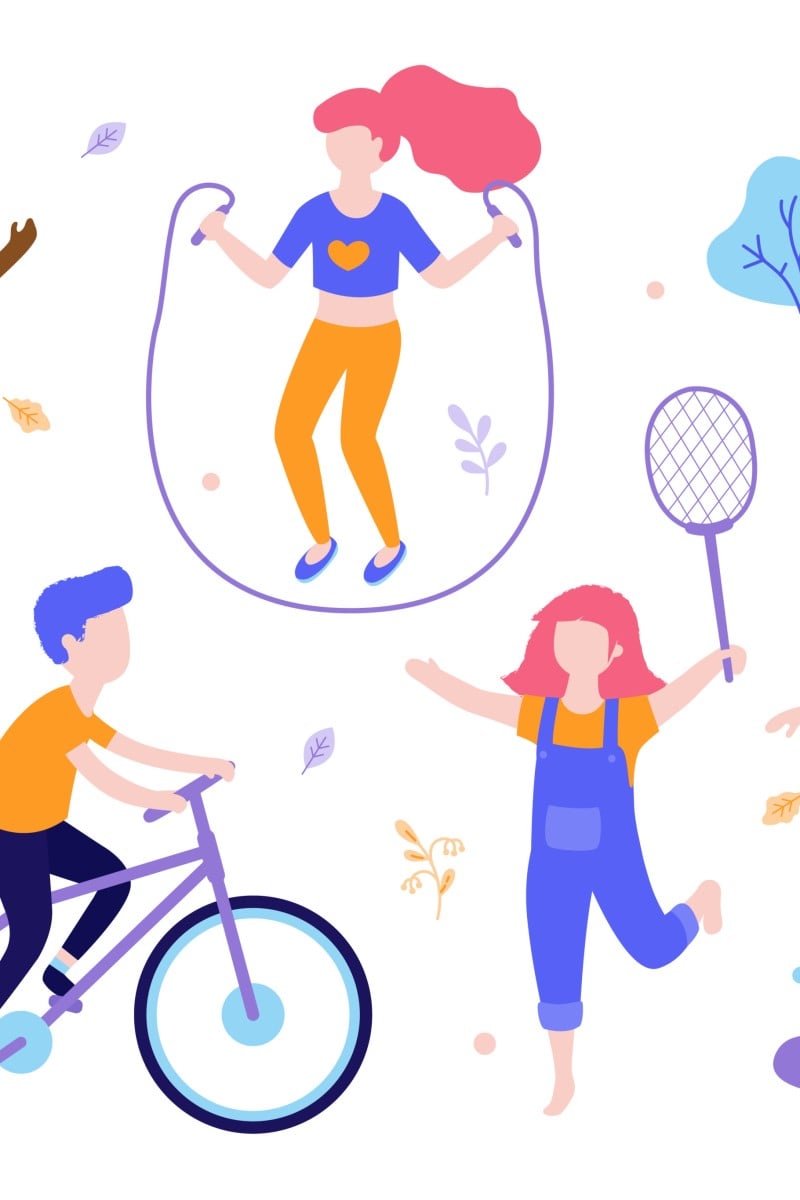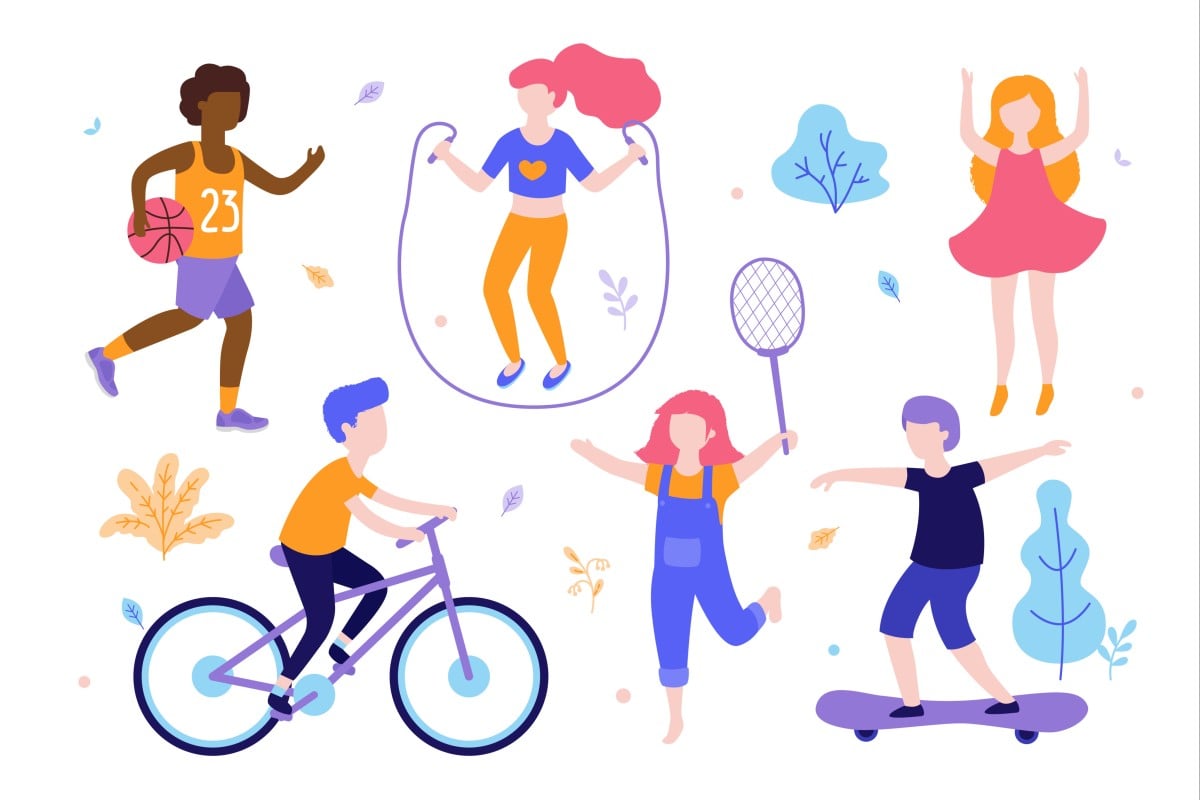
Your Voice: Get students moving and handle AI with care (long letters)
This week, readers write about helping young people improve their physical fitness and handling new artificial intelligence models carefully.
 We must do more to ensure children have enough time for and interest in physical activity, one reader writes. Photo: Shutterstock
We must do more to ensure children have enough time for and interest in physical activity, one reader writes. Photo: ShutterstockHave something to say? Send us a letter using this form.
Get students moving
Agnes Cho, Tak Nga Secondary School
The sedentary lifestyles that many young individuals in Hong Kong lead today pose serious risks to their physical and mental well-being as well as their academic performance.
According to a survey by the University of Hong Kong, only about 3.5 per cent of secondary students meet the recommended exercise requirements. We must ensure a healthier future for our youth.
Several factors contribute to student inactivity. First, teenagers’ increasing reliance on screens and digital devices has significantly decreased their physical movement. Teens are often reluctant to take breaks from engaging content on various media platforms.
Why don’t Hong Kong children get enough exercise? They might be running out of steam
Demanding academic schedules also discourage students from being active. Our gruelling academic environment forces students to spend long hours in cram schools, leaving little time for physical activities. Consequently, they rarely have the opportunity to move and improve their fitness.
Schools can promote physical activity by offering various sports that cater to different interests and abilities. Encouraging active commuting, incorporating physical activity into the curriculum and organising fitness challenges can also motivate students to be more active.
In addition, schools can conduct exercises during the morning to avoid taking too much time away from students’ exceptionally busy schedules. Studies show exercise increases the release of neurochemicals like endorphins, serotonin and dopamine, which elevate mood and focus in class.
Hong Kong bodybuilder helps other women find fun and freedom in fitness
Morning exercises would help students make it a habit while improving their mood and focus. Even 15 minutes of movement would be beneficial.
As students depend heavily on their mobile devices, they should be encouraged to dedicate some screen time to physical movement. Given the abundance of accessible online resources available to us, we should use and incorporate them into our daily lives.
For instance, students can integrate exercise into their routines without disrupting their schedule by using 20 minutes – normally reserved for idle scrolling – to follow a fitness video or participate in virtual workout sessions.
Ultimately, individuals and schools must promote proactive exercise habits. A collective effort will maintain students’ well-being and physical fitness and foster a more harmonious environment. Let’s get moving now for our health today and tomorrow.
Handle AI with care
Cherry Poon Yuet-yuen, St Paul’s Secondary School
Chinese artificial intelligence (AI) company DeepSeek’s newest large language model (LLM) has arrived. It has been met with a mix of anticipation and worry.
The impressive technology raises questions about the future of jobs. There is fear it could be used to spread misinformation or even launch cyberattacks. It is, therefore, crucial we handle AI carefully, implementing robust safety regulations and guidelines to ensure everyone’s safety.
I believe dynamite and AI are strikingly similar: both were initially developed with good intentions. Dynamite was created as a safer tool for land clearing, while LLMs were intended to help with complex calculations and complete tasks quickly. Both have the potential to improve lives significantly but are not perfect.
Your Voice: Thoughts on DeepSeek AI (short letters)
Humans have weaponised dynamite in conflict and war. Similarly, AI has been used to spread untruths, supersede jobs and deceive others through generated media. This is undeniably concerning.
The core issue lies not with the tools but with how they are used. Both dynamite and AI, when misused, can cause significant harm despite their initial benevolent purposes.
AI’s ability to generate convincing imitation content raises a critical question: Should we keep AI away from children? This is a complex dilemma.
On one hand, children are still developing their critical thinking skills, and AI can easily disseminate fabricated content. This could expose children to harmful disinformation.
Children, driven by curiosity and lacking experience, might unintentionally ask dangerous questions, such as, “How do I make explosives?” While this might be a scientific inquiry for an adult, a child might attempt to carry it out.
On the other hand, AI allows access to a vast realm of information. Restricting children’s access to AI could deprive them of valuable learning resources. AI is a pivotal information technology and communication development. Children need to understand it for their future endeavours.
British musicians protest government’s AI plans with an ‘almost’ silent album
I propose some ways children can safely use AI. First, we must establish clear boundaries and guidelines. This includes setting rules for acceptable questions and asking parents to review chat history and monitor online activities.
Second, parents should oversee children’s usage of AI-powered tools to ensure their child can actually comprehend the material and are not merely relying on the technology to complete tasks.
Third, we should encourage children’s creativity and imagination. Providing other opportunities for them to express themselves creatively, without using AI-generated content or tools, will build their confidence and reinforce sound conceptual understanding.
